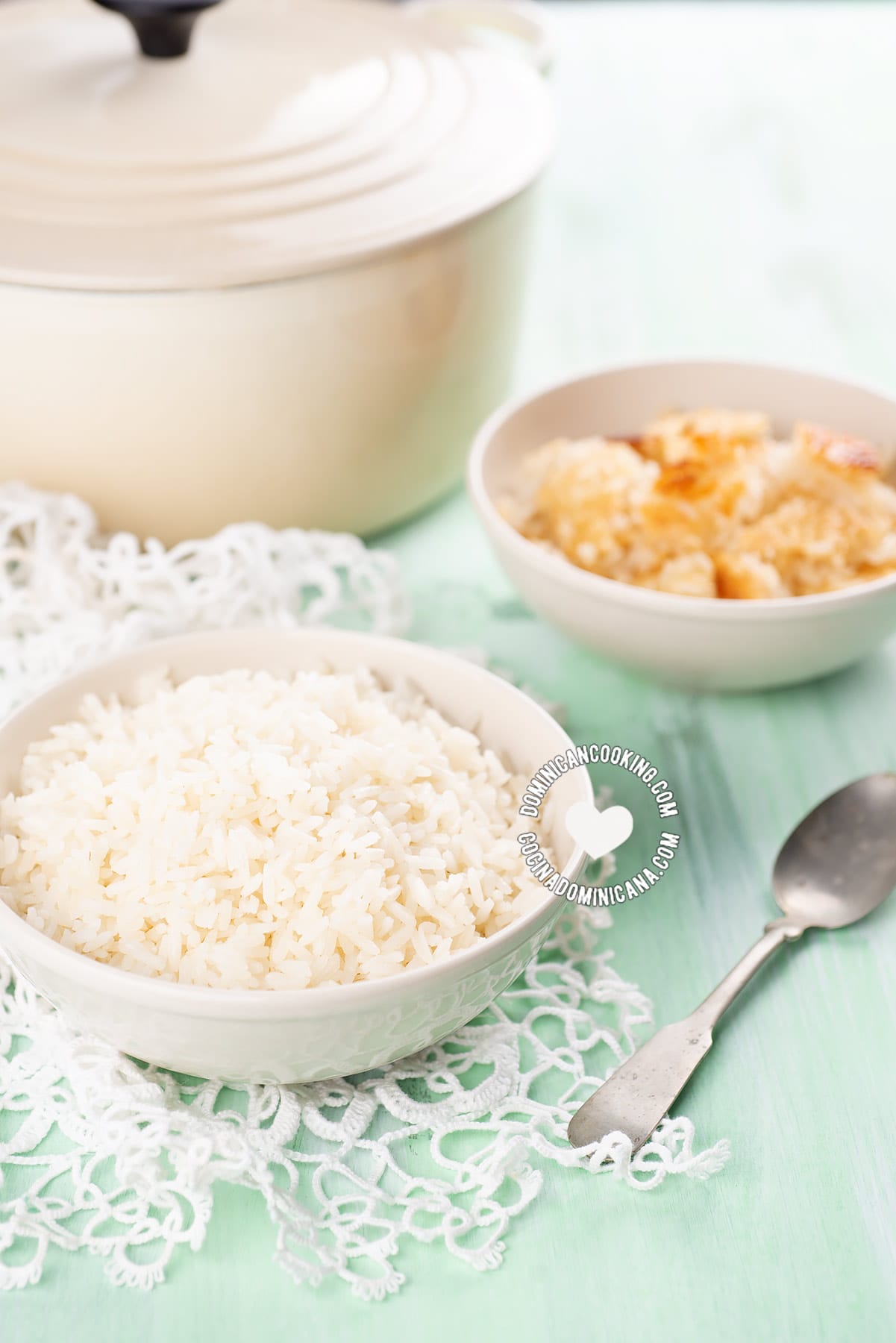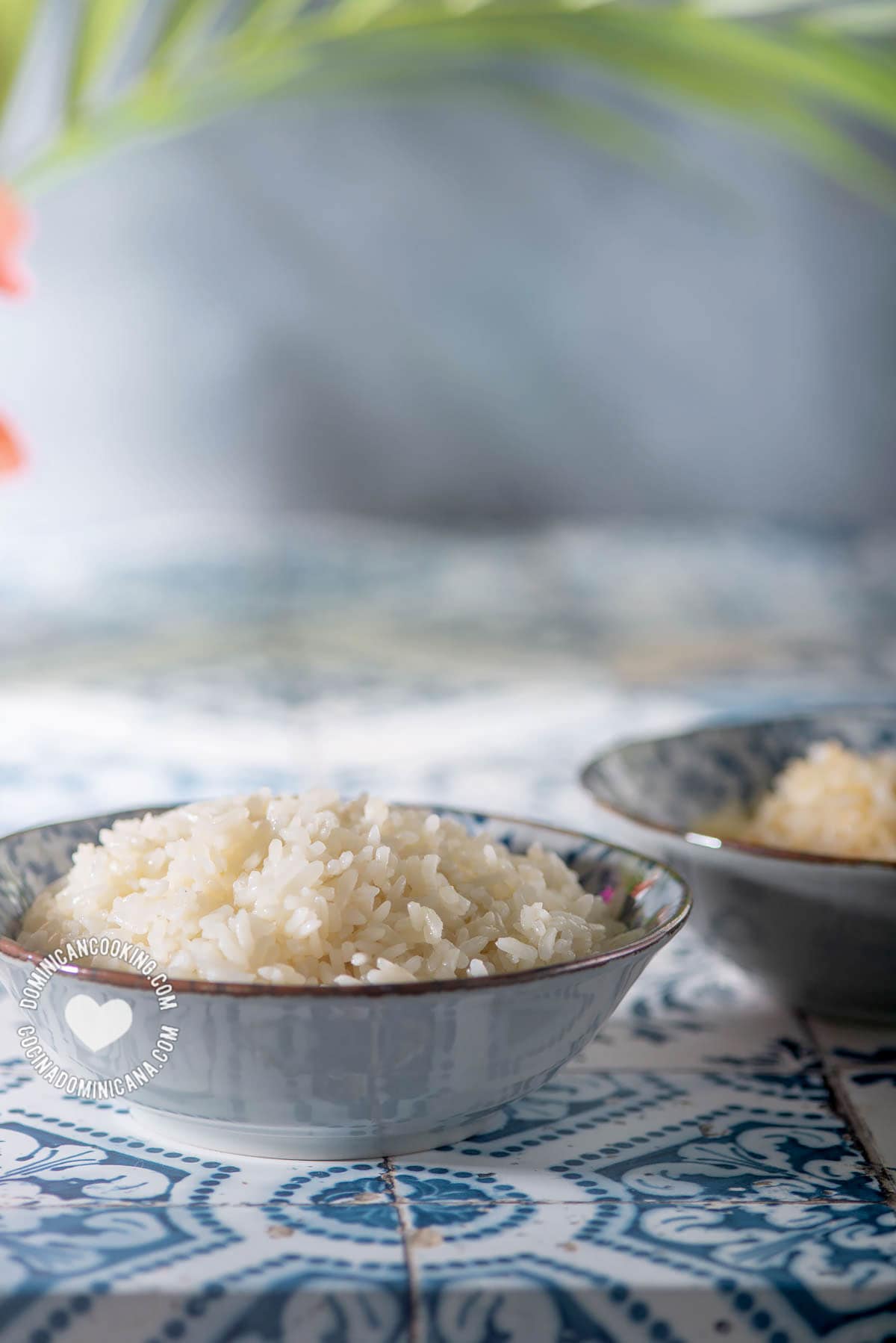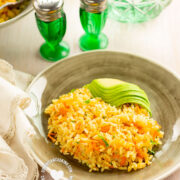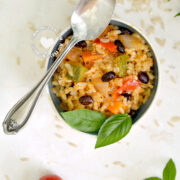This Arroz Blanco recipe (White Rice) is the base of Dominican lunch menus, one of the components of La Bandera Dominicana. The perfect Arroz Blanco is proof of expertise for any Dominican cook.
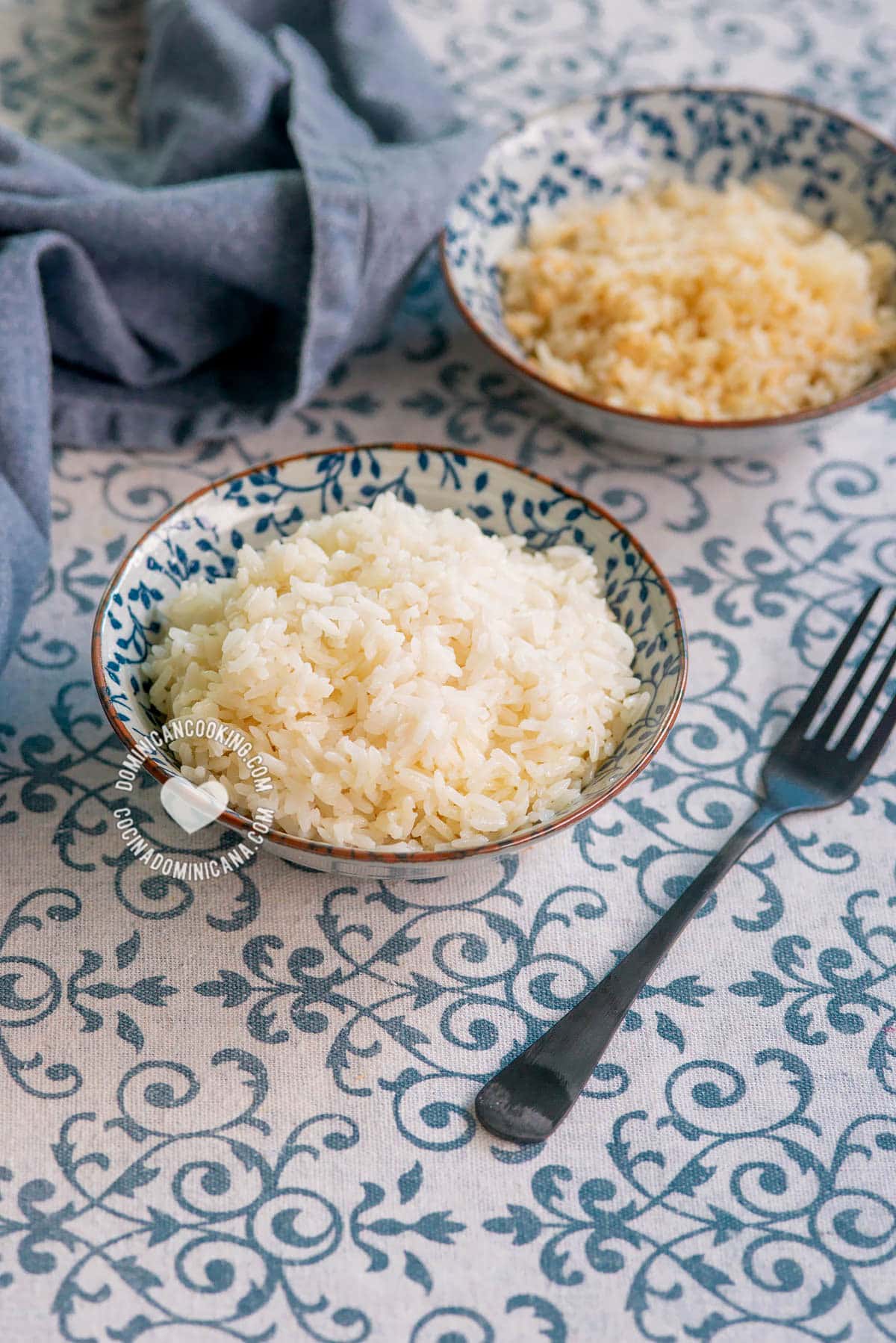
Why we ❤️ it
Arroz Blanco (White Rice) is the staple of La Bandera Dominicana, the traditional Dominican lunch meal. Anyone willing to get into this world of Dominican cooking needs to learn how to make perfect white rice.
I like to think I’m a pretty good cook. But it wasn’t always so… At the debut of my marital career, I was only 23 and my recipe repertoire consisted of little more than grilled cheese sandwiches, toasted marshmallows, and the quintessential Kraft Dinner.
Dominican arroz blanco
To complicate things further, I was in Sosúa. Foreign food names and oddly shaped pots and pans, teetering dangerously on uneven stovetops, were hindrances to say the least. But the idea of one all-important comida every day -- day after day, 7 days a week -- was absolutely daunting. And the staple of this daily meal? My new nemesis: El Arroz.
Never having been a big rice-eater before, and much less a big rice-cooker, I observed the process many, many times before making my first foray into this uncharted territory. I bowed before my comadres, who never failed to please. Their Dominican rice was always firm, and yet at the same time enticingly tender. The grains were never bland or pasty, and they unfailingly produced the popular film of concón: the truest symbol of a successful arroz.
My own efforts were completely and sadly inconsistent. Sometimes soupy, sometimes crunchy - my making white rice was a veritable caja de sorpresas for everyone involved. An epic battle was thus waged on my part to master my rice-to-water ratio, and to perfect the placement of my funda plástica on my paila.
Then, finally...
The perfect arroz blanco
After various episodes of giving up (and one very poorly received supper of Rice-A-Roni, sponsored by the makers of What Was I Thinking?®), a magical occurrence took place. With my giant metal spoon in hand, I peeled the plastic bag from the pot. Wondrously, I didn’t scald my face with the rush of steam. A good omen.
There it was in all its glory. Birds chirped happily in the background and the Gods of Cereals smiled down. My white rice glistened, was perfectly cooked, firm, and tasted good.
"Ya te puedes casar", said my long-suffering husband. Um, gee, thanks. Thanks a lot. I just may do that.

Our guest: Jill is Canadian, mother of two Dominican-Canadian children. She lived in Sosua, Dominican Republic for many years, so she gives us an unusual insight into our culinary culture.
Dominican rice tricks
These are the tricks that Aunt Clara shares for perfect Dominican rice:
Ratio
Generally speaking, 1.5 cups of water for every cup of rice is my preferred ratio of rice to water. I would sometimes use less water if I want very firm rice (like to make chofán), or if there is any other ingredient in the rice recipe (like for locrio or moro), because the vegetables will contribute some water to it.
Portions
Generally speaking, I would cook 1 cup of raw rice for every two people. The rice will double in volume, so each person will get one cup of cooked rice. This is strictly for white rice, other dishes may require a different amount of rice per person. For this recipe, I have increased the portions sizes close to what is typically served in the Dominican Republic.
Washing
I do not wash the rice. Unless the rice is of very low quality (you can see debris, for example), I suggest you don't either. Rice is already quite low on nutrients, washing gets rid of nutrients.
The pot
The pot has to be at least twice as large as the amount of rice and water combined for the best results. A pot that is too small will result in unevenly cooked rice. Better too large a pot than too small.
The traditional Dominican pot is made of cast aluminum, which makes the rice stick a lot, but produces more concón. I have made Dominican-style rice with good concón in cast iron, non-stick, and other pots. The technique may be a little different, but the result is the same. Read my tips for a perfect concón.
Type of oil
Typically, we Dominicans use neutral-flavored vegetable oil, but I have tried it with coconut oil, avocado oil, olive oil, and even butter. Each will impart a different but still enjoyable taste. Do your own thing.
How to cover
No, I don't use a plastic bag (Dominicans would know what I am talking about), that and anafes went the way of the dodo. A pot with a tight-fitting lid is enough, and you don't want unknown chemicals leaching into your food.
Leftovers
White rice never goes to waste in our country. If you have leftovers, you can make chofán (fried rice), yellow rice, and rice, sweet corn, and pineapple salad.
Recipe
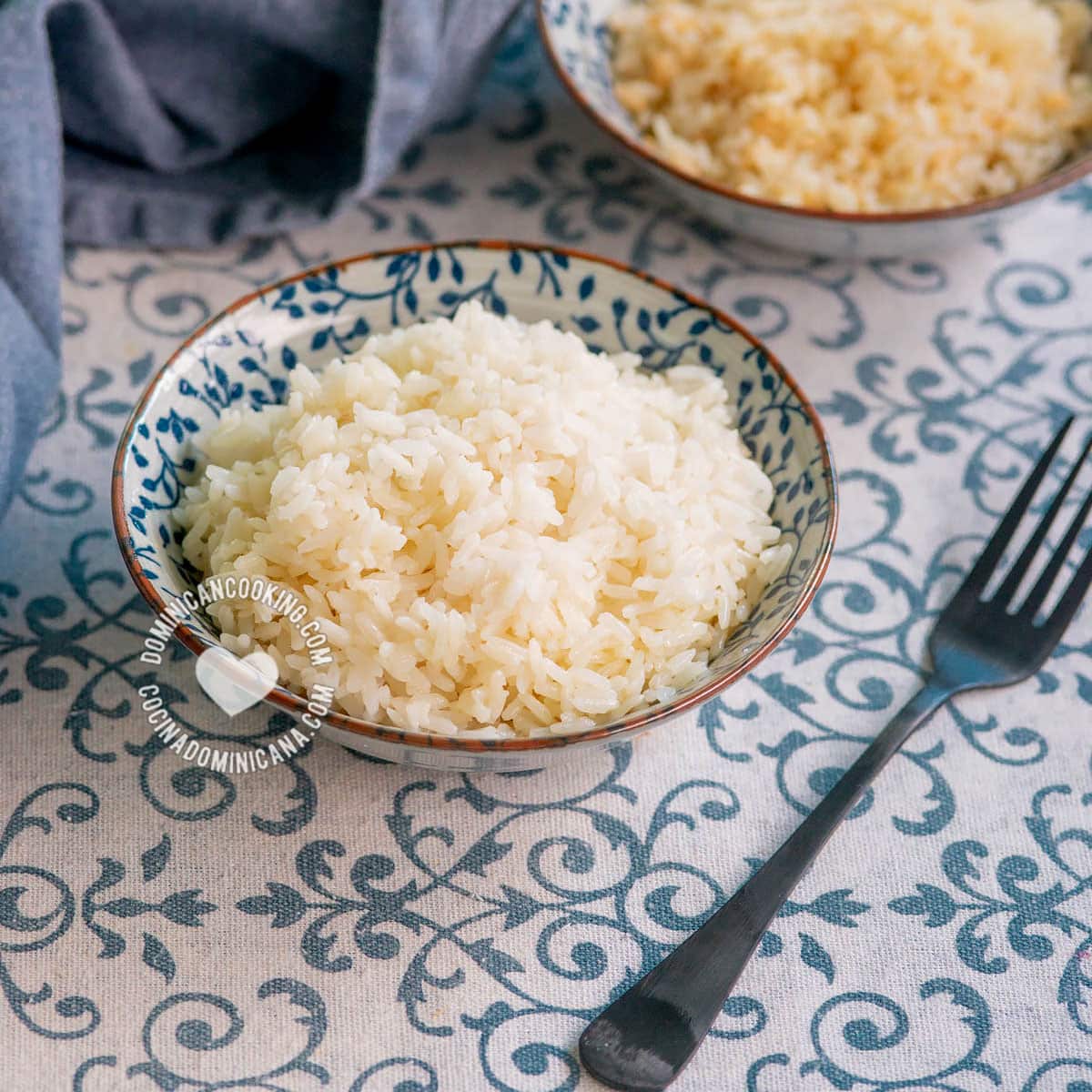
[Recipe + Video] Arroz Blanco (Dominican White Rice)
Ingredients
- 5 tablespoons vegetable oil, divided
- 2 teaspoons salt
- 4 cup rice, (long grain, Carolina)
Instructions
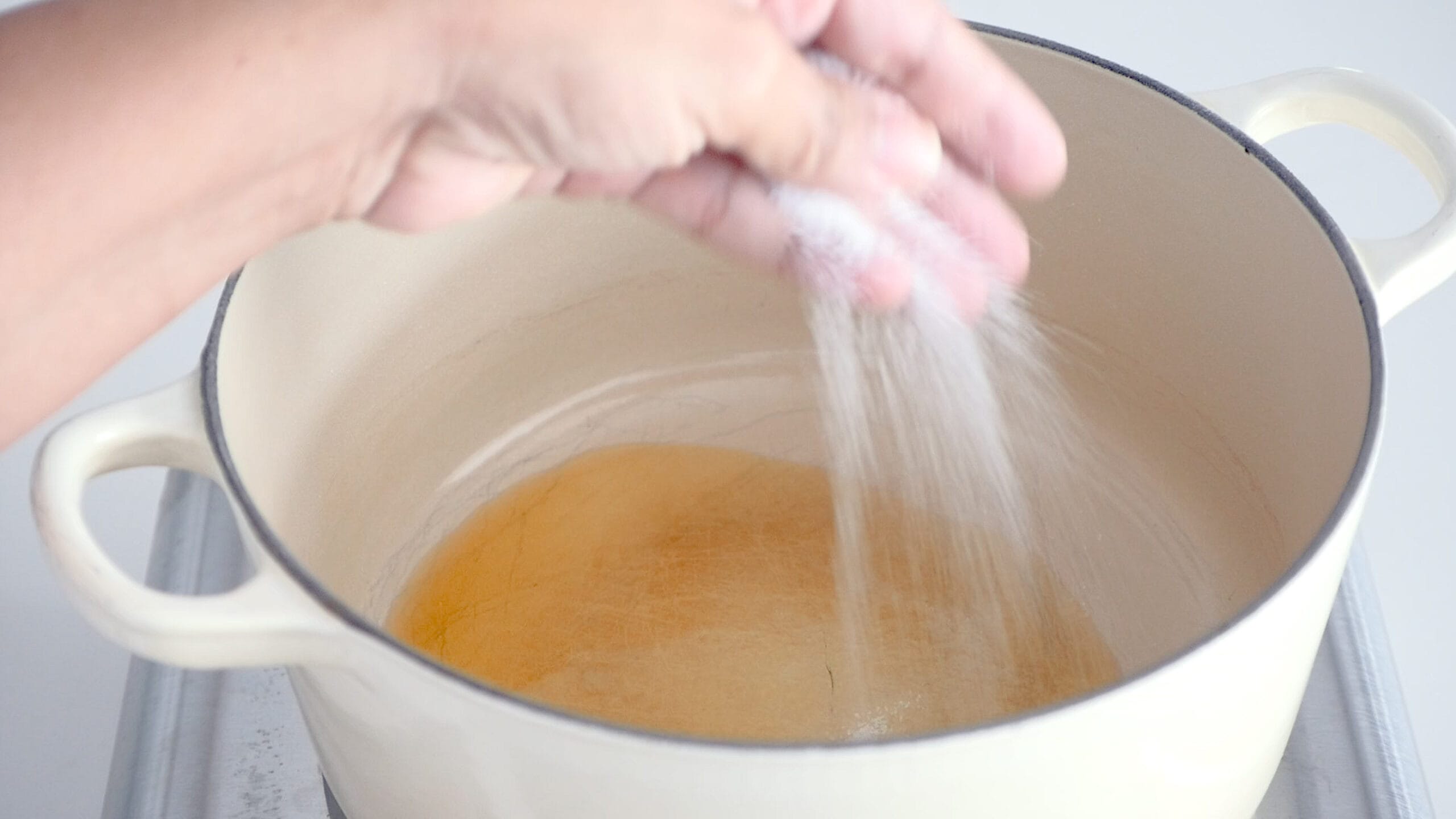 Heating the water: In a medium aluminum pot (Amazon affiliate link) (minimum 2.5 liters [0.5 gal] capacity) heat 3 tablespoons of oil over medium heat, add the salt. When the oil is a little hot add 6 cups [1.4 liters] of water, taking care not to splash.If you use another type of pot, just combine oil, salt, and water and heat over medium heat.
Heating the water: In a medium aluminum pot (Amazon affiliate link) (minimum 2.5 liters [0.5 gal] capacity) heat 3 tablespoons of oil over medium heat, add the salt. When the oil is a little hot add 6 cups [1.4 liters] of water, taking care not to splash.If you use another type of pot, just combine oil, salt, and water and heat over medium heat.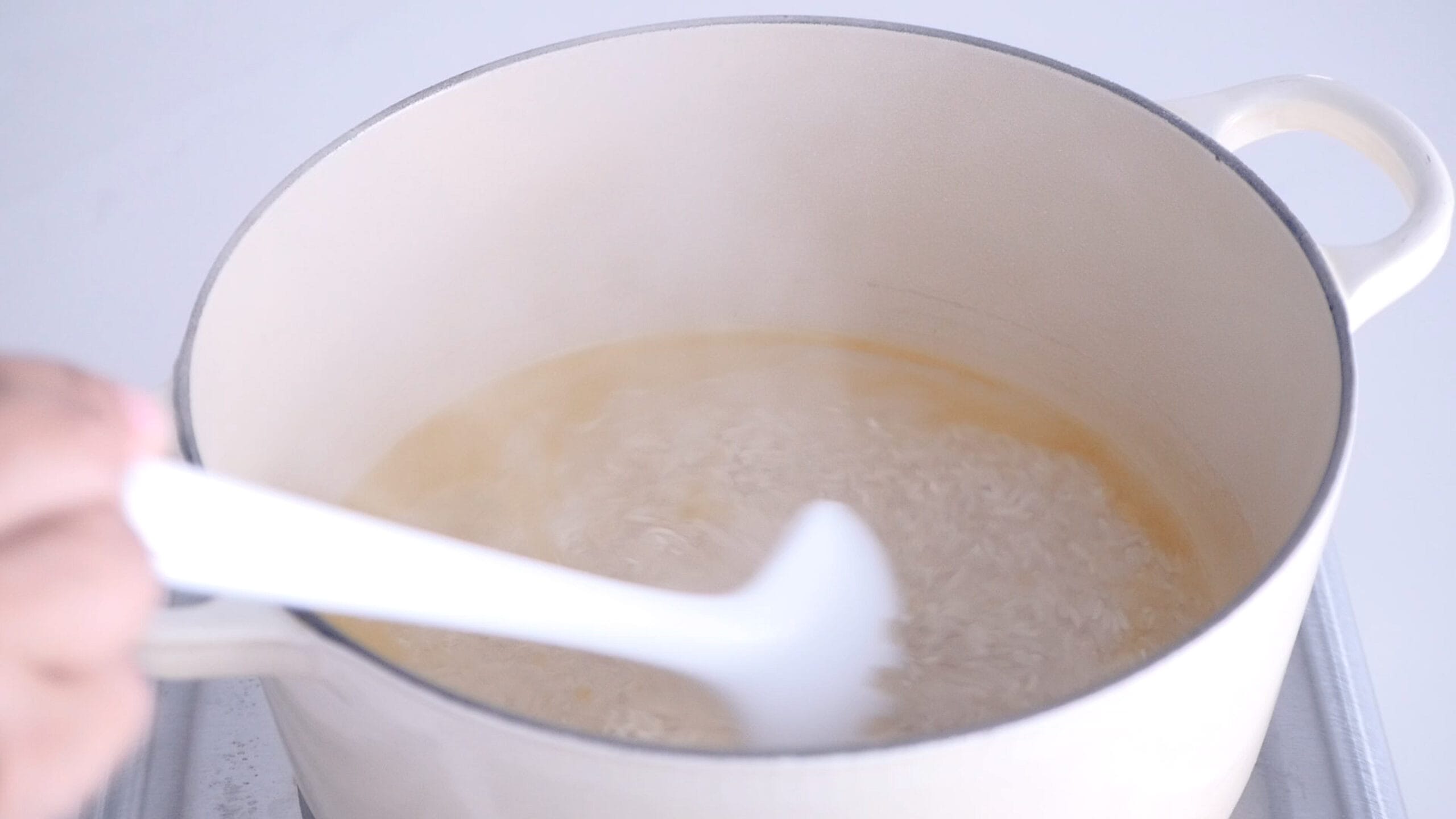 Adding the rice: When the water reaches boiling point, add the rice and cook, stirring regularly to prevent it from sticking to the bottom.
Adding the rice: When the water reaches boiling point, add the rice and cook, stirring regularly to prevent it from sticking to the bottom.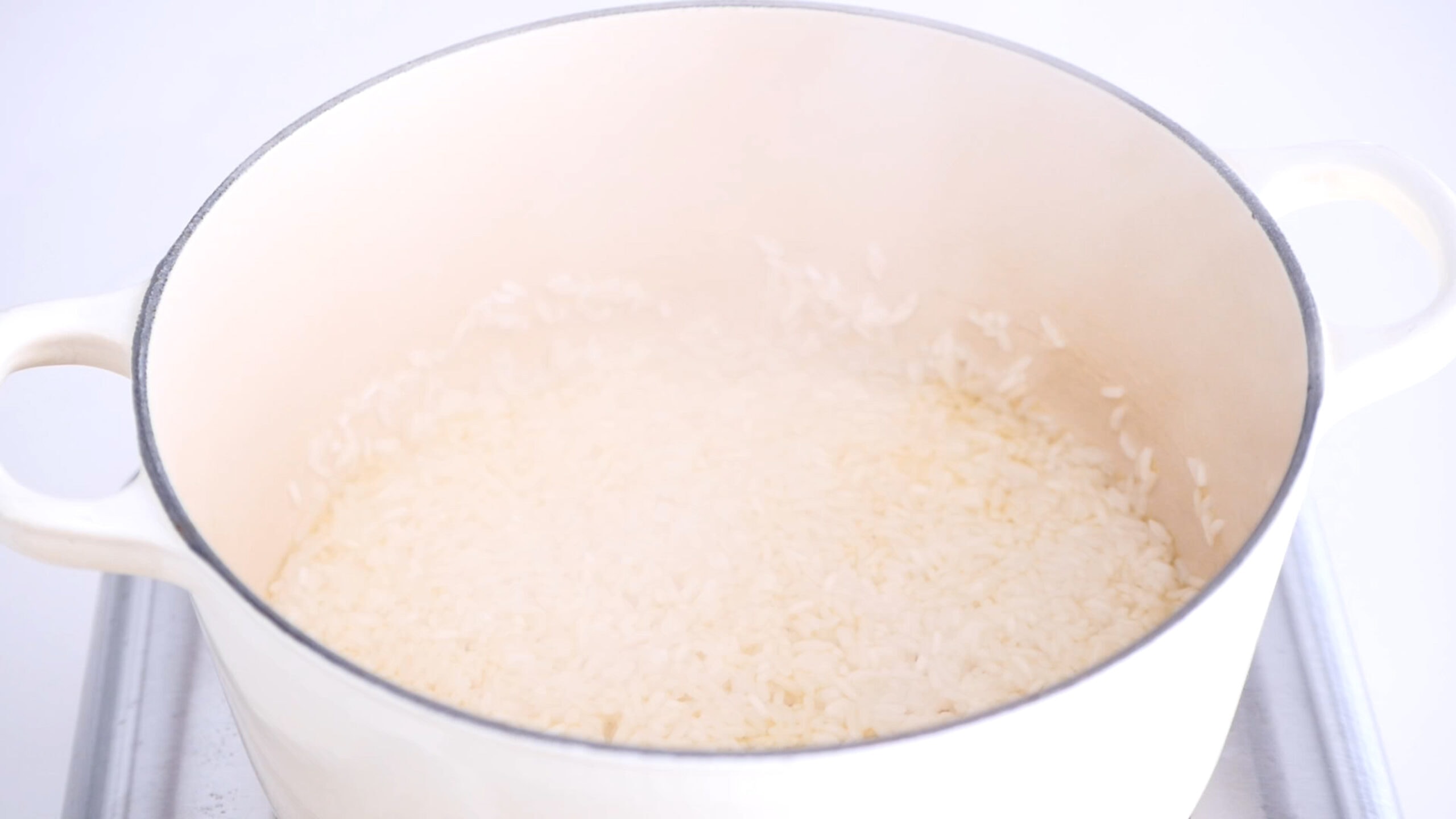 Covering the rice: When the water has evaporated, cover with the lid and cook over very low heat (but enough to generate steam) for 15 minutes.Remove the lid, stir, add the remaining oil and cover again. This oil will help the rice to shine, and the concón will be crispier.In 5 more minutes taste the rice, it should be firm but soft inside. If necessary cover again and leave for another 5 minutes on low heat.
Covering the rice: When the water has evaporated, cover with the lid and cook over very low heat (but enough to generate steam) for 15 minutes.Remove the lid, stir, add the remaining oil and cover again. This oil will help the rice to shine, and the concón will be crispier.In 5 more minutes taste the rice, it should be firm but soft inside. If necessary cover again and leave for another 5 minutes on low heat.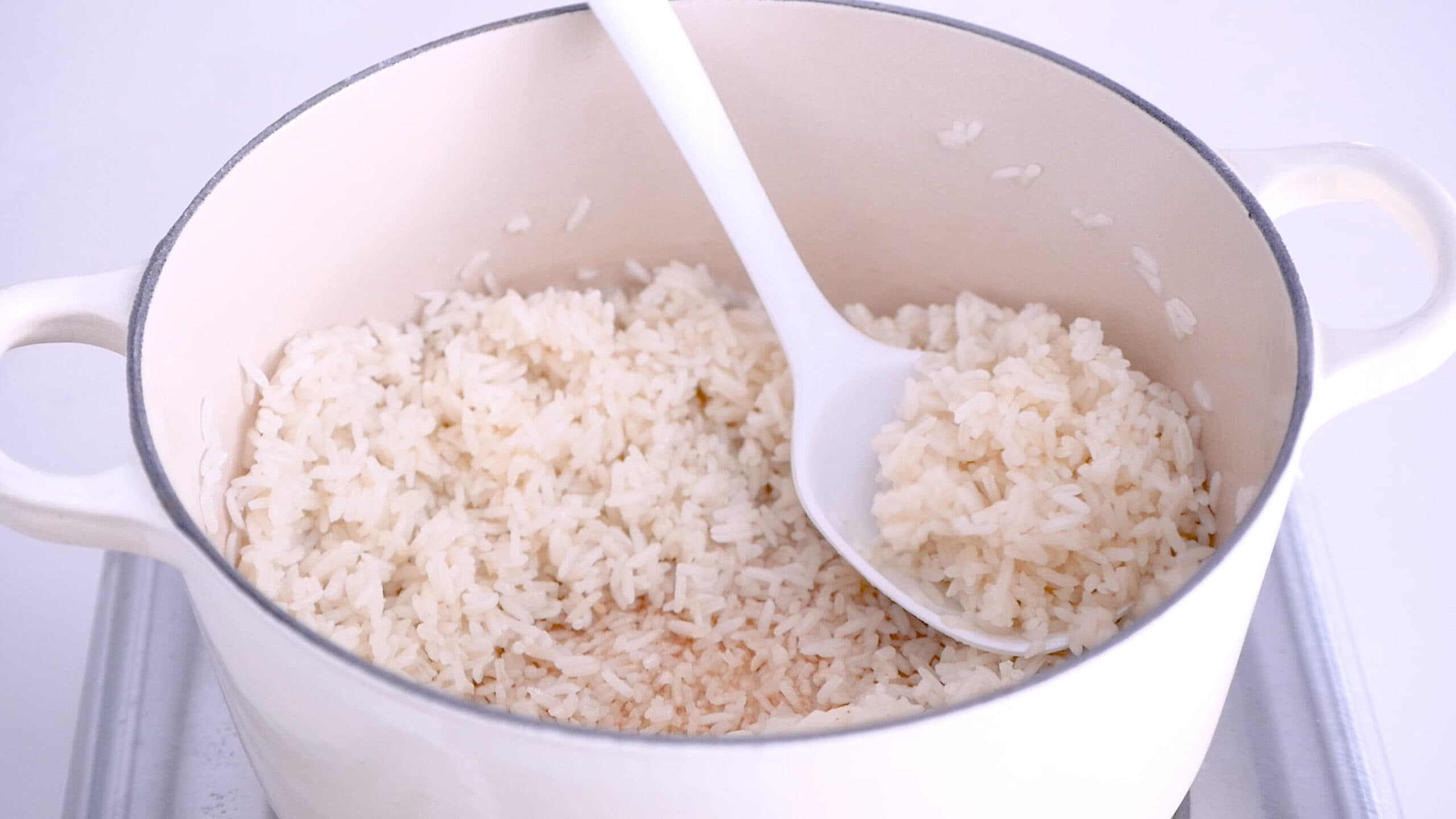 Serving: As soon as the rice is ready, remove it from the pot and place it in a serving dish (this prevents the concón from getting soggy). Scrape off the concón (rice stuck to the bottom) and serve on the side.Serve with meat, fish or seafood, salad, and beans.
Serving: As soon as the rice is ready, remove it from the pot and place it in a serving dish (this prevents the concón from getting soggy). Scrape off the concón (rice stuck to the bottom) and serve on the side.Serve with meat, fish or seafood, salad, and beans.
Video
Tips and Notes
Nutrition
Nutritional information is calculated automatically based on ingredients listed. Please consult your doctor if you need precise nutritional information.


